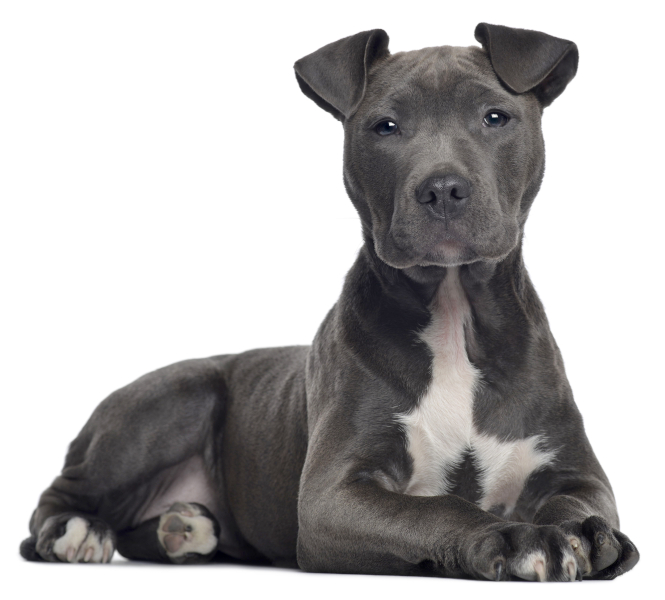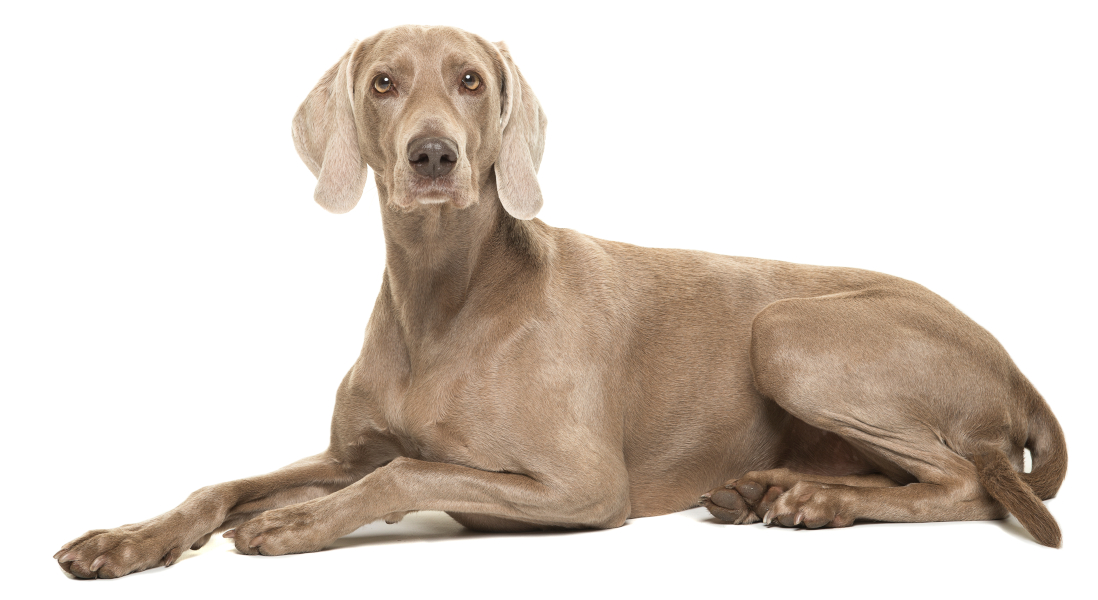Quick Summary

Click here for Price and Turnaround Time
Phenotype: Base coat colors are lightened (diluted) to paler shades. For example, black becomes a gray-blue color (often called "blue" by breeders) and chocolate brown becomes a pale silvery red (in some breeds, this can be called "lilac"; in the French Bulldog, this is typically referred to as "isabella" - other breeds may have different names for this dilution).
Mode of Inheritance: Autosomal recessive
Alleles: D = Non-dilute, d1 = Dilute (variant 1, common), d2 = Dilute (variant 2), d3 = Dilute (variant 3, rare)
Breeds appropriate for testing: Many breeds
Explanation of Results:
- Dogs with D/D genotype are not expected to display dilute coat colors; they have no known dilution variants. They cannot produce dilute offspring or transmit any of the known dilution variants to their offspring.
- Dogs with D/d1, D/d2, or D/d3 genotype are not expected to display dilute coat colors, but they are carriers of dilution variants. They will transmit the dilution variant they carry to 50% of their offspring. Matings between two carriers of dilute variants are expected to produce 25% puppies with dilute coat colors.
- Dogs with d1/d1, d2/d2, d3/d3, d1/d2, d1/d3, or d2/d3 genotype are expected to display dilute coat colors. They will transmit a dilution variant to all of their offspring.
Results of this test can be submitted to the OFA (Orthopedic Foundation for Animals)
Dog Coat Color - Basic Panel (All breeds)
$100 per animal
Additional coat colors $15 per test
Dog Coat Color - French Bulldog Panel
$105 per animal
Additional coat colors $15 per test
Dog Coat Color - Bulldog Panel
$80 per animal
Additional coat colors $15 per test
Dog Coat Color - Great Dane Panel
$80 per animal
Additional coat colors $15 per test
Dog Coat Color and Type - Havanese Panel
$115 per animal
Additional coat colors $15 per test
Labrador Retriever Health Panel 2
$180 per animal
Nova Scotia Duck Tolling Retriever Health Panel
$140 per animal
Sample Collection
Dog DNA tests are carried out using cells brushed from your dog's cheeks and gums. The preferred cytology brushes are sent to you by mail, or you may provide your own brushes. For accepted alternative brushes, click here
We recommend waiting until puppies are at least three weeks old before testing.

Step-By-Step:
- Make sure the dog has not had anything to eat or drink for at least 1 hour prior to collecting sample.
- When swabbing puppies, isolate each puppy from the mother, littermates and any shared toys for 1 hour prior to swabbing. Puppies should not have nursed or eaten for 1 hour prior to collecting sample.
- If collecting samples from more than one dog, make sure to sample one dog at a time and wash your hands before swabbing another dog.
- Label brush sleeve with name or ID of dog to be sampled.
- Open brush sleeve by arrow and remove one brush by its handle.
- Place bristle head between the dog’s gums and cheek and press lightly on the outside of the cheek while rubbing or rotating the brush back and forth for 15 seconds.
- Wave the brush in the air for 20 seconds to air dry.
- Insert brush back into sleeve.
- Repeat steps 5 - 8 for each unused brush in sleeve on a fresh area of cheek and gums. Make sure to use and return all brushes sent by the VGL. In most cases, it will be 3 brushes per dog. If using interdental gum brushes, please note that the VGL requires 4 brushes per dog and only moderate or wide interdental gum brushes are accepted.
- Do not seal brushes in sleeve.
- Place all samples in an envelope and return to the address provided.
ATTENTION:
- Do not collect saliva/drool – the key to obtaining a good sample is getting cheek cells on the swab
- Do not rub swab on the dog’s tongue or teeth – this will result in poor quality sample
- Do not collect a sample from a puppy that has recently nursed – the mother’s genetic material can rub off on the puppy’s mouth and contaminate the sample

A recessive mutation d1, previously named d, in the melanophilin (MLPH) gene (g.48121642G>A, c.-22G>A) was identified as the cause of color dilution phenotypes in several dog breeds (Drögemüller et al. 2007). However, this mutation alone does not account for all dilute color phenotypes. In 2018, Bauer et al. identified a second dilution in MLPH, variant d2 (c.705G>C, p.Gln235His) in the Sloughi, Chow Chow, and Thai Ridgeback dogs. Analysis at the Veterinary Genetics Laboratory (VGL) determined that the d2 variant is present at a frequency of less than 1% in phenotypically dilute French Bulldogs, thus suggesting that additional variants also cause this phenotype. Subsequent research at the VGL identified a third, very rare dilution variant d3 (c.667_668insC, p.His223Profs*41). The d3 variant has been detected in the Italian Greyhound, Chihuahua, Mudi, Pumi, Shih Tzu, Pekingese, Tibetan Mastiff, Yorkshire Terrier, Shetland Sheepdog, indigenous dogs, and wolf-dog hybrids (Van Buren et al. 2020).
Two copies of any of the three dilution variants, or any combination of two of these variants, are necessary to lighten the color. The d1 mutation is known to cause a reduction in the amount of full-length protein product, thus producing less pigment. The effect of the d2 mutation on the resultant protein is unknown, although in the homozygous state it dilutes color. The phenotype produced by two copies of the d3 variant is unknown, but this mutation is predicted to shorten the MLPH protein and likely disrupt function. Dogs that are compound heterozygotes d1/d2, d2/d3, or d1/d3 have a dilute phenotype. This diagnostic DNA test can detect all three known variants of the MLPH gene.
